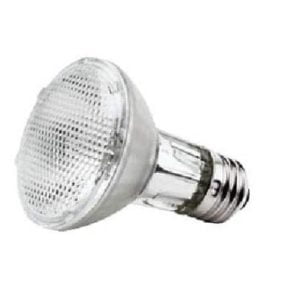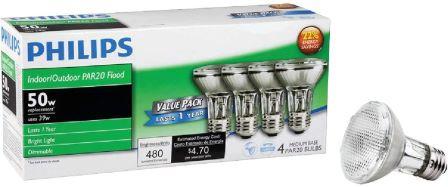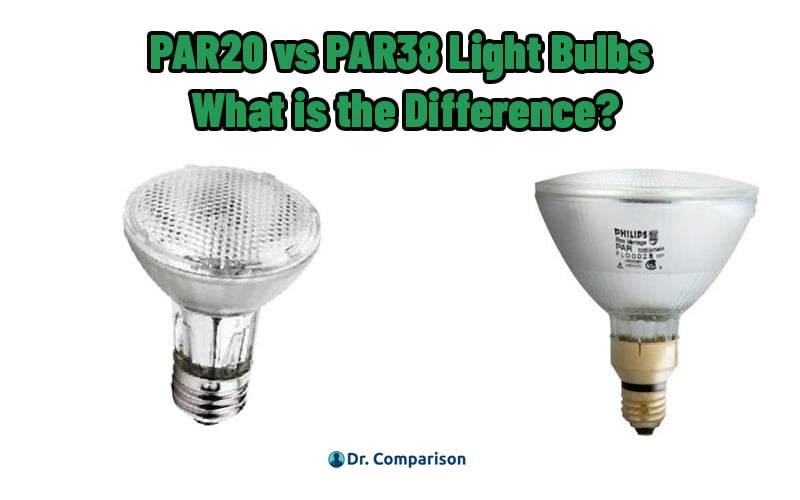Table of Contents
There are over 50 types of light bulbs with different sizes, shapes, and consumption. It’s no wonder that deciding on the right one isn’t the easiest task. Once you have chosen between halogen, incandescent, and LED bulbs, you still need to make sure the base and bulb fit.
To make an informed decision, we are going to go over the specifics of the Par20 and the Par38. We’ll go over their differences and similarities, so you know which is the best choice for your home or office.
The Par bulbs are parabolic aluminized reflectors. They are ideal for floodlights and ceiling cans when you want a more focused beam. The beam angle is normally around 45º. Par refers to their shape and the number to their size. The larger the number, the larger the bulb.
The specifications of the Par20 and the Par38 will vary from brand to brand but below you can see the general details of each LED bulb.
Par20 vs Par38 Light Bulbs – Side By Side
Par20 | Par38 | |
| Image |  |  |
| Height | 3.62 inches | 5.22 inches |
| Width | 2.6 inches | 4.72 inches |
| Average Brightness | 500-700lm | 1200-1400lm |
| Average Watts | 7W | 15W |
| Incandescent Equivalent | 40W | 75W |
| Price |
For recessed lighting, you have various can sizes from 2 inches to 9 inches. The most common sizes are 4, 5, and 6 inches. While the Par20 will fit in any can over 3 inches, the 4.72-inch diameter of the Par38 means it can only be used in cans over 5 inches. They both typically have an E26 base.
Another choice is brightness. The Par30 has 1200 to 1400lm while the Par20 is between 500 to 700lm. Because they are LED bulbs, the consumption is lower than incandescent light bulbs. The Par20 is a 7W light bulb, like a 40W traditional bulb. The Par38 uses 15W, a 75W equivalent
Some of the similarities include a range of Kelvin depending on the warmth of light you are looking for. They can be dimmable or non-dimmable and there are bulbs that can be used for outdoor fittings.

Read next – Par16 vs Par38 Light Bulbs: What is the Difference?
Par20s and Par38s on the Market Today
We took a look at Philips light bulbs to get a clearer idea of what the Par20 and Par38 have in common.
The Philips Par20
This LED light bulb is 2.5 inches in diameter and 3.4 inches high. It has an E26 base and provides a 40º beam angle. It’s a 7W bulb (50W replacement) and 500lm. Popular choices are the pack of 6 in 3000K or 4000K. The bulbs are dimmable, flicker-free, and for indoor use. It costs approximately $0.85 per year with an average of 3 hours of daily use. They have a 25,000-hour lifespan.
The Philips Par38
This is an 11W bulb, which can replace a 90W incandescent bulb. The beam angle is the same 40º but it’s brighter with 900 lumens. This particular light bulb has 5000K and can be used indoors or outdoors. It’s a non-dimmable bulb. The life span is shorter at 10,950 hours. It also costs a little more to run at $1.32 per year for 3 hours of use.
Read next – Par16 vs Par20 Light Bulbs: What is the Difference?
The Final Verdict
Generally speaking, the Par20s are the most cost-effective light bulbs being both cheaper to run and last for longer. Nevertheless, when you make your choice, think of your needs. Both the Par20 and the Par38 come as dimmable bulbs for indoor or outdoor use, so the final decision will come down to the size.
